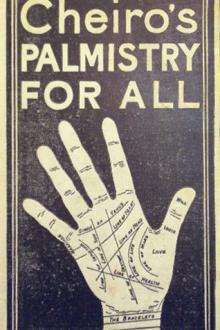The Diary - Samuel Pepys (red white and royal blue hardcover txt) 📗

- Author: Samuel Pepys
Book online «The Diary - Samuel Pepys (red white and royal blue hardcover txt) 📗». Author Samuel Pepys
The duel was fought at Barn Elms. ↩
Anna Maria, daughter of Robert Brudenel, second Earl of Cardigan. Walpole says she held the Duke of Buckingham’s horse, in the habit of a page, while he was fighting the duel with her husband. She married, secondly, George Rodney Bridges, son of Sir Thomas Bridges of Keynsham, Somerset, Groom of the Bedchamber to Charles II, and died April 20th, 1702. A portrait of the Countess of Shrewsbury, as Minerva, by Lely, was bought by Sir Robert Peel at the Stowe Sale, for £68 5s. There is also another portrait at Goodwood; and still another in the National Portrait Gallery. Pope’s well-known lines (Moral Essays, epist. 3):
“Gallant and gay, in Cliveden’s proud alcove,
The bower of wanton Shrewsbury and love,”
are incorrect, because workmen were engaged in building Cheveden in 1680, when the countess married her second husband. ↩
The Duke of Albemarle. ↩
Afterwards Duke of Norfolk. See note 3103. ↩
See note 156. The custom was observed on May 30th, 1853, at the festivities consequent on the marriage of Princess Anna of Prussia with Prince Frederick of Hesse. The Oberhofmeister distributed to the gentlemen present small pieces of riband on which the initials of the bride were embroidered. This ceremony is a modified form of the old custom of cutting up the bride’s garter, and letting the gentlemen of the party scramble for the bits. Formerly it was the custom for a Prussian princess, immediately on leaving the company, to take her garter from her knee, and send it to the king, who tied one half of it round his own sword-knot, and sent the remainder, as the most attractive present he could offer, to a neighbouring and chivalrous monarch. See Times, June 2nd, 1853. In 1609, Lady Haughty, in Ben Jonson’s The Silent Woman, says, “We see no ensigns of a wedding here; no character of a bride ale; where be our scarves and our gloves? I pray you give them us. Let us know your bride’s colours and yours at least.” And again she indignantly asks, “No gloves? no garters? no scarves? no epithalamium? no masque?” (act iii, sc. 2). ↩
Captain John Perriman (see note 3377). ↩
Marguerite de Valois, Queen of Navarre, sister of Francis I of France. The “pretty story” was doubtless from her Heptaméron, a work imitating in title and matter the Decameron of Boccaccio. She is said to be the heroine of some of the adventures. It is fair to add that she wrote also the Miroir d’une Ame Pecheresse, translated into English by Queen Elizabeth, the title of whose book was A Godly Medytacyon of the Christian Soules, published by John Bale in 1548. —B. ↩
Samuel Newman, born at Banbury, and educated at Oxford. He emigrated to New England in 1637, and died there in 1663. His Concordance of the Bible was first published in London in 1643. —B. ↩
One regiment of which was commanded by Lord Gerard. —B. ↩
The absurd practice of holding up drowning men by the heels, when taken out of the water, occasioned the loss of many lives. The object was to let the water run out! —B. ↩
He kept the Three Stags tavern at Holborn Conduit. ↩
This was not the only time that Pepys took trouble to save the estate of a friend who had committed suicide. In the Caveat Book in the Record Office, p. 42 of the volume for 1677, is the following entry: “That no grant pass of the Estate of Francis Gurney of Maldon in Essex, who drowned himself in his own well on Tuesday night ye 12th of this instant August, at the desire of Samuel Pepys, Esquire, August 20, 1677.” ↩
Sir Francis Chaplin, clothworker, Sheriff 1668, and Lord Mayor in 1677. ↩
Dr. William Fuller, translated from Limerick, 1667. ↩
Buckden, parish of St. Neots district, Huntingdon, and in the diocese of Ely. The manor was given to the Bishops of Lincoln in the reign of Henry II. The palace was the residence of the bishops until 1838, when it was sold, and a new palace was provided for them. ↩
Godefroi d’Estrades, French ambassador in England in 1661. See note 1199. ↩
Dr. Edward Stillingfleet was rector of St. Andrew’s from 1664 to 1689, when he was promoted to the bishopric of Worcester. ↩
It is not clear who Betty Turner really was, but probably she was the daughter of Mr. and Mrs. Turner of the Navy Office, and not of Serjeant John Turner, as suggested in a note on p. 71 of this volume. She appears to have been a friend of Theophila Turner, and is mentioned with her on January 4th and 6th, 1668–69. ↩
George Legge, the colonel’s eldest son, born 1647; captain, R.N., 1667; and in 1682 created Lord Dartmouth. ↩
A term for making a noise or disturbance.
“Sing hi-ho, Sir Arthur, no more in the house you shall prate,
For all you kept such a quarter, you are out of the Council of State.”
↩
In Fleet Street, opposite St. Dunstan’s church. ↩
The chief office of the Commissioners of Accounts was at Brooke House, Holborn, and they were sometimes styled the “Brooke House Committee.” Pepys went there on July 3rd, 1668. Durham Yard, Strand, may have been the residence of one of





Comments (0)